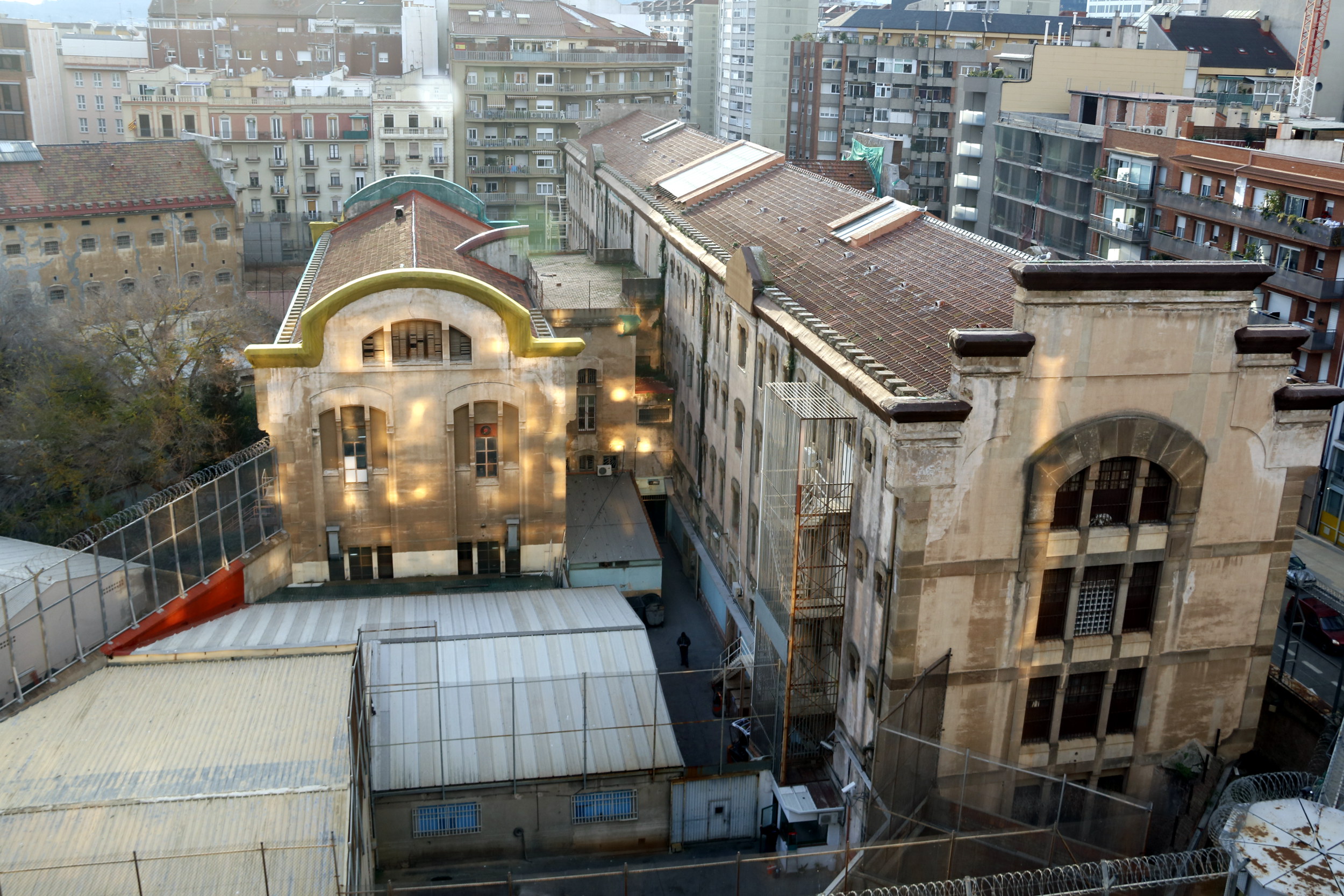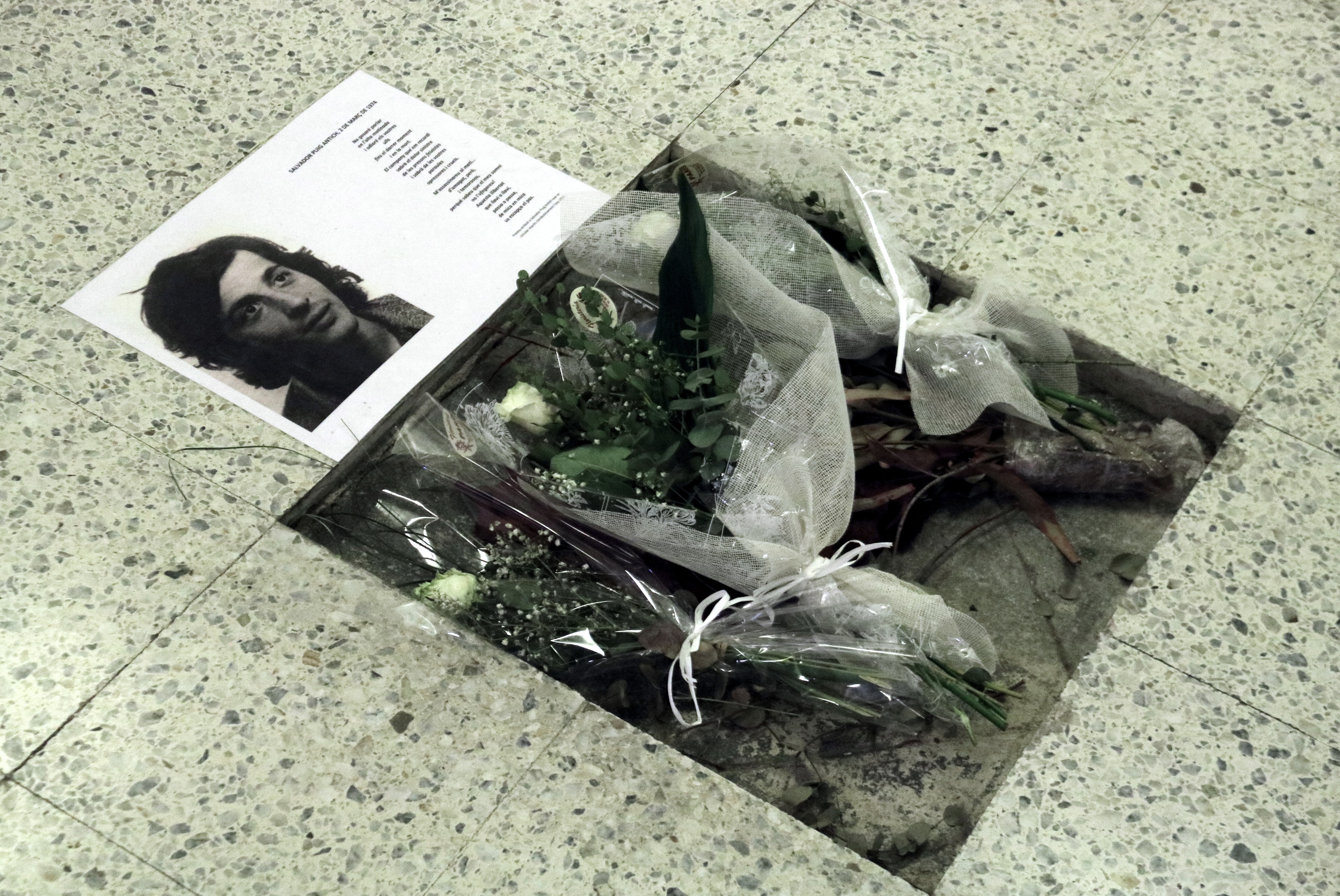From Catholic re-education to overcrowded misery, the legacy of Barcelona's 'La Model' prison
The now-historic memory site is poised for yet another transition, this time towards a green future

On the edge of Barcelona’s hip L’Eixample Esquerra neighborhood sits a star-shaped building surrounded by large beige walls, some of which are covered in colorful street art and political slogans. A whole two of the characteristic blocks are taken up by the building named La Model, which to many is known as the notorious prison in Barcelona, opened in 1904.
When the prison guards turned the key for the last time in 2017 and the prison was closed forever, it became a historic memory site in Barcelona, open to the public, to never forget the horrors that lived inside the big walls.
But before it became a house of horrors, La Model was built on the idea of modernizing the prison system, as evidenced by its peculiar architectural design.
Modern architecture
Its architects, Josep Domènech i Estapà and Salvador Vinyals traveled, around Europe before coming across a system devised by the English thinker Jeremy Bentham, who came up with the idea of the panopticon, a type of institutional building with a central tower that allowed the entire complex to be controlled from a single surveillance point.
In addition, the prison would be built with individual cells with a bed, natural light, electricity and regular meals, to house fewer than 1,000 inmates.
“It was inaugurated as a model prison, that’s why it’s called La Model,” explains Isabel Centeno, a historian and tour guide at the prison. “They created a penitentiary system with prison education, and for the first time they began to work with the prisoners.”

Instead of simply locking up the prisoners, the idea was to re-educate them through Catholic masses and lectures so that they could be reintegrated into society after serving their sentences.
From theory to overcrowded misery
Although the prison was inaugurated as a paradigm of modernity, it soon became an icon of political and social repression.
In 1909, five years after the opening of La Model, protests and strikes against the conscription of reservists for the war in Morocco, escalated into violent confrontations in Barcelona between the Spanish army and Catalan freemasons, anarchists and republicans, marking the onset of what would later be known as the Tragic Week (Setmana Tràgica, in Catalan).
Many demonstrators were arrested and sent to La Model, which quickly became overcrowded.

Later, during the Primo de Rivera dictatorship from 1923 to 1930, the prison was again flooded, this time with political prisoners who opposed the regime, a story that repeated itself – on a much larger scale, during the Francisco Franco dictatorship after the end of the Spanish Civil War in 1939.
30,000 prisoners at a time
“Throughout the 20th century, political prisoners began to arrive, and that’s why it became overcrowded,” explains Isabel Centeno.
"The prison was built with 820 cells to accommodate only one inmate per cell, but at one point in 1939, when the Civil War ended, there were more than 30,000 prisoners here, about 16 people per cell.”
Although the regular prisoners were crammed together with the political prisoners, the two groups lived side by side in relative peace. Because many of the political prisoners were highly educated people, many of whom had been professors and lawyers before being imprisoned, they took it upon themselves to teach the illiterate inmates to read and write.
According to Centeno, there was a kind of solidarity among the prisoners, and they relied on each other to get through the difficult time in prison.
“They had lost the war, many of the people who came in were sick, they didn’t have the strength to fight, and the Franco repression was also very harsh,” says Centeno. ”Many of them were sentenced to death. But those who came in from the outside came from a war where they knew how to organize and help each other, which then created a very strong sense of solidarity between the groups.”
Nightly executions
One of the darkest parts of the history of La Model were the executions,mostly carried out by a firing squad, but also at least 24 times by the medieval strangling device, garotte vile.
The first execution took place in 1908, and the last one in 1974, just one year before the death of dictator Francisco Franco, when anarchist Salvador Puig Antich was put to death by the garotte vile.
During the first decade of the Franco dictatorship, the repression and punishment of dissent was particularly harsh, and Centeno explains that nightly executions were commonplace at the prison during that time.

“For 15 years, executions by firing squad were carried out at night,” says Centeno, adding that inmates’ names were called at night from a list signed by a judge, only to walk to their deaths and be taken away in trucks.
“Sometimes, the prisoner didn’t even have time to say goodbye to his loved ones, only to his cellmates,” she adds of the harrowing practice.
The execution of Puig Antich, intended as a deterrent to other anti-Franco activists at the time, sent shockwaves through Catalan society, says Centeno, because people who were fighting the regime were convinced that democracy was coming soon.
A prison for presidents
Many people served time in La Model, and according to the historian, many older people today know someone, or know someone who knows someone, who spent time in the prison during the dictatorship, adding that “most of them for political reasons.”
In fact, some prominent Catalan politicians, such as Lluís Companys, who later became president of Catalonia and proclaimed the Second Spanish Republic.
Jordi Pujol, who was president of Catalonia during more than twenty years, between 1980 and 2003, was also incarcerated in la Model for two years, after leading a Catalanist protest at the Palau de la Música in 1960, before becoming president.
Other prominent politicians and republican thinkers and activists include Francesc Layret, Francesc Ferrer i Guardia, Salvador ‘El noi de sucre’ Seguí, and Lluís Maria Xirinags.
Gay and transgender prisoners
During the Franco regime, homosexuality was illegal, under the 1933 Law on Vagrants and Criminals (later, the Law of Social Danger and Rehabilitation), which sought to punish what the regime considered to be “antisocial behavior,” and included beggars, sex workers, and homosexuals.
As raids on known and underground queer spots were frequent, many gay men and trans women ended up in La Model, where many suffered violence and abuse while the prison guards looked the other way, according to Centeno.
“Until 1982, people were put in jail just for being gay,” she says, adding that the trans women suffered terrible abuse and were raped repeatedly. “Put a woman in a prison with 4000 men. Everything they tell us about being there is just horrible.”
Drugs and a sniper
In the late 70’s, when hard drugs such as heroin ravaged Spanish and Catalan societies, La Model was also hit.
According to the historian, the typical user was between 14 and 23 years old, and at one point, there were more than 4,000 inmates, or six or seven per cell, addicted to heroin, without the authorities knowing what to do about it.
Because the prison was located in the center of Barcelona, surrounded by residential buildings, drugs kept pouring into the prison, as people would wrap drugs in balls and throw them over the wall from the sidewalk, according to Centeno.
In 1984, someone else took advantage of the relatively easy access to the prison, but this time it wasn’t to pass drugs, it was to kill someone.
At the time, the notorious and feared French mob boss Raymond Vaccarizzi was serving time at La Model, and one way loved ones could make contact with inmates was to shout their names from the sidewalks and wait for the person to appear in the cell windows that overlooked the street.
Late one night in July of that year, Viccarizzi’s wife called out her husband, and as he appeared, a sniper on a roof across from La Model fired three bullets into the window from which Vaccarizzi emerged, killing him.
La Model, Batega!
For years, politicians pledged to close the penitentiary. Meanwhile, prisoners came and went, and La Model was occasionally in the news as inmates tried to escape or protested about the poor conditions inside. When the prison was closed in 2017, the fourteen inmates left were transferred to another prison elsewhere. Police officers finished the last guard. Signatures made the penitentiary’s closure official. And with the closing of its doors, its century-long history came to an end.
Instead, it was transformed into a site of historic memory open to the public.
In 2023, a new project for the old prison was unveiled, called ‘La Model, Batega!’ This new project wants to give new life to the old prison, including building a high school and 121 new public housing units. The idea behind the winning project is to is maintain most of the current structures of the old building, while modernizing others.
At the same time, the old prison yards will be transformed into open green paces, and the new project will still reserve space for the Historic Memory Site.
“I always tell the children who come and visit the prison that if history is forgotten, it’s bound to be repeated,” concludes Isabel Centeno.
La Model is open to the public on Fridays, Saturdays and Sundays.
Podcast
Listen to the latest episode of our podcast Filling the Sink to learn more about the Catalan Wikipedia.